
"THE DECISION"
(All paintings in this post by Martin Driscoll)
**********
The painting above could be of my great-great-grandparents, John and Bridget Cody, making "The Decision" to immigrate to the United States. I know little about John and Bridget, except that they were both born in the 1830s in southern Ireland (county unknown), and that their son, my great-grandfather Joseph Cody, was born in the United States.
There, the trail ends. The genealogist of my father's family - the Codys/Rockneys - has traced our Norwegian ancestors back to the 1600s, but has been stymied regarding the Irish side. And no wonder. How many John and Bridget Codys might have lived in any county in Ireland? But I am convinced that I, a Norwegian/Scottish/Irish American, have Irish peasant blood in my veins, and that I owe my existence in part due to the Great Irish Potato Famine. The time frame fits. John and Bridget would have been in their 20s around that time, young enough to start over in a foreign country, and young enough to still have children after coming to America.

"WITNESSING THEIR EVICTION"
The Great Famine - An Gorta Mór or An Drochshaol (The Bad Life) - was a period of starvation, disease and mass emigration between 1845 and 1852 during which the population of Ireland was reduced by 20 to 25 percent. Approximately one million of the population died and a million more emigrated from Ireland's shores.
The proximate cause of the famine was a potato disease commonly known as late blight. Although blight ravaged potato crops throughout Europe during the 1840s, the impact and human cost in Ireland—where a third of the population was entirely dependent on the potato for food—was exacerbated by a host of political, social and economic factors which continue to be debated today.
But there is no debate over the fact that the famine was a watershed in the history of Ireland. Its effects permanently changed the island's demographic, political and cultural landscape. For both the native Irish and those in the resulting diaspora, the famine entered folk memory and became a rallying point for various nationalist movements. Modern historians regard it as a dividing line in the Irish historical narrative, referring to the preceding period of Irish history as "pre-Famine."
I am also thoroughly convinced that the great famine was caused by greed, by stupidity and possibly even by a wish to entirely eradicate the Irish race. As I stated above, one third - ONE THIRD - of the population of Ireland was entirely dependent on the potato for food. This did not happen by accident.
It is impossible to tell this story in a few paragraphs, but I am going to attempt an overview. In the forty years after 1801, when Ireland came under the governance of the United Kingdom, the British grappled with the problems of governing a country which had, as Benjamin Disraeli put it in 1844, "a starving population, an absentee aristocracy, and an alien Church (Catholic)".
Several hundred commissions and special committes inquired into the state of Ireland. Without exception their findings prophesied disaster; Ireland was on the verge of starvation, her population rapidly increasing, three-quarters of her laborers unemployed, housing conditions appalling and the standard of living unbelievably low. This was a contrast to Britain, which was beginning to enjoy the modern prosperity of the Victorian and Industrial Ages.
Several hundred commissions and special committes inquired into the state of Ireland. Without exception their findings prophesied disaster; Ireland was on the verge of starvation, her population rapidly increasing, three-quarters of her laborers unemployed, housing conditions appalling and the standard of living unbelievably low. This was a contrast to Britain, which was beginning to enjoy the modern prosperity of the Victorian and Industrial Ages.
The bulk of the Irish population lived in conditions of poverty and insecurity. At the top of the social pyramid was the ascendancy class, the English and Anglo-Irish families who owned most of the land, and who had more or less limitless power over their tenants. Many of these landlords lived in England and were called absentee landlords. They used agents to administer their property for them, with the profits being sent to England. A number of the absentee landlords never set foot in Ireland.
One commission report in 1845 stated that "It would be impossible adequately to describe the privations which they [Irish laborer and his family] habitually and silently endure . . . in many districts their only food is the potato, their only beverage water . . . their cabins are seldom a protection against the weather... a bed or a blanket is a rare luxury . . . and nearly in all their pig and a manure heap constitute their only property." The commissioners noted the "patient endurance which the labouring classes have exhibited under sufferings greater, we believe, than the people of any other country in Europe have to sustain."
Agents for the landlords could sublet the land as they saw fit. They split the holding into smaller and smaller parcels to increase the amounts of rents they could then obtain. Tenants could be evicted for reasons such as non-payment of rents (which were very high), or if the landlord decided to raise sheep instead of grain crops. The tenants had no security of tenure on the land; being tenants "at will" they could be turned out whenever the landlord chose.
Holdings became so small that ONLY potatoes—no other crop—would suffice to feed a family. Shortly before the Great Hunger, poverty was so widespread that one third of all Irish small holdings could not support their families after paying their rent, except by doing seasonal migrant labor in England and Scotland.
Ironically, the potato had been introduced to Ireland as a garden crop of the gentry. But by the first two decades of the eighteenth century, it had become a base food of the poor, especially in winter. When the blight came, in 1845, starvation came not far behind. That year, half the crop was lost. In 1846 three-quarters of the harvest was lost. The first deaths from starvation were recorded in autumn 1846.
Holdings became so small that ONLY potatoes—no other crop—would suffice to feed a family. Shortly before the Great Hunger, poverty was so widespread that one third of all Irish small holdings could not support their families after paying their rent, except by doing seasonal migrant labor in England and Scotland.
Ironically, the potato had been introduced to Ireland as a garden crop of the gentry. But by the first two decades of the eighteenth century, it had become a base food of the poor, especially in winter. When the blight came, in 1845, starvation came not far behind. That year, half the crop was lost. In 1846 three-quarters of the harvest was lost. The first deaths from starvation were recorded in autumn 1846.
**********
Once the famine began, the English government was severely blamed for not responding to the crisis. Many suggestions were made to Parliament, including providing employment on public works, keeping the abundant Irish crops in Ireland to feed its people, opening ports to imports but shutting off exports, stopping distillation of grain, and introducing Tenant Rights as practiced in Ulster (the northern counties of Ireland).
John Mitchel, one of the leading political writers of Ireland, raised the issue of the "Potato Disease" in Ireland as early as 1844, noting how powerful an agent hunger had been in certain revolutions. In February 1846, he commented on "the wretched way in which the famine was being trifled with", and asked if the British Government even yet had any conception that there might be soon "millions of human beings in Ireland having nothing to eat."
The British reaction was to tell Irish people not to be alarmed, that learned men had been sent from England to enquire into all those matters; and that there was no "immediate pressure on the market". Sniffed The British, there was "always a tendency to exaggeration in Irish news".
John Mitchel, one of the leading political writers of Ireland, raised the issue of the "Potato Disease" in Ireland as early as 1844, noting how powerful an agent hunger had been in certain revolutions. In February 1846, he commented on "the wretched way in which the famine was being trifled with", and asked if the British Government even yet had any conception that there might be soon "millions of human beings in Ireland having nothing to eat."
The British reaction was to tell Irish people not to be alarmed, that learned men had been sent from England to enquire into all those matters; and that there was no "immediate pressure on the market". Sniffed The British, there was "always a tendency to exaggeration in Irish news".
"GOING TO THE GALWAY PIG FAIR"
**********
In Ireland, it was widely believed that "if Yorkshire and Lancashire had sustained a like calamity in England, there is no doubt such measures would have been taken, promptly and liberally."
In an article on "English Rule" in March, 1846, Mitchel wrote that the Irish People were "expecting famine day by day" and they attributed it collectively, not to "the rule of heaven (but) to the greedy and cruel policy of England." The people, he said, believed that their starving children "cannot sit down to their scanty meal but they see the harpy claw of England in their dish."
The people, Mitchel wrote,, watched their "food melting in rottenness off the face of the earth," all the while watching "heavy-laden ships, freighted with the yellow corn (wheat) their own hands have sown and reaped, spreading all sail for England."
Mitchel later wrote one of the first widely-circulated tracts on the famine, "The Last Conquest of Ireland (Perhaps)". It established the widespread view that the treatment of the famine by the British was a deliberate murder of the Irish, and contained the famous phrase: “The Almighty, indeed, sent the potato blight, but the English created the Famine."
(Mitchel was later convicted of treason and deported to the Bahamas.)
**********
The feeble response of the British government to the famine came too little, too late. A million Irish men, women and children died; a million others felt their only solution was to emigrate, resulting in the great Irish presence in the United States, Canada and many other nations.
It is my firm belief that the dissatisfaction with how the British government handled the crisis led to greater and greater demand for Irish Home Rule, resulting eventually in rebellions like the Easter 1916 uprising, and the partition of the island and the creation of two separate countries: The northern 16 counties that became Northern Ireland, still under British rule today, and the Irish Free State of the southern Ireland, later called the Republic of Ireland.
**********
While researching Irish history, I ran across the paintings of American artist Martin Driscoll. I think he has done a splendid job of depicting the lives of the Irish peasanty in the 19th Century. Some of these works have been sold and others are for sale. To view these and more, go to












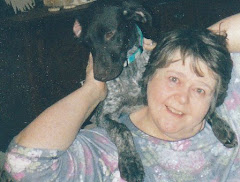



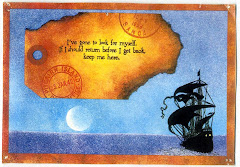














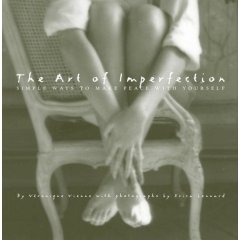
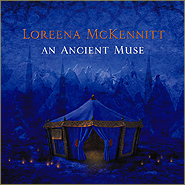

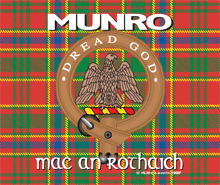
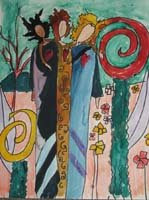

13 comments:
That was a really interesting post. I think my great great grandfather came here to the USA during the famine period. My aunt had started researching my Grandfather's heritage a few years before she died. I'll have to try to find out more.
Hugs, Susan
The Potato Famine was a terrible time in Ireland and my husband's Irish ancestors also left Ireland at this time though they only crossed the Irish Sea rather than the Atlantic. For a great many of them life wasn't that much better here in the slums of Liverpool and Manchester. What people call poverty now doesn't begin to equate with the real poverty that these people knew. A really good post here Julie.
Very good post! I think the paintings are wonderful too!
What a horrible time it was, to have to leave such a beautiful island home!
Very informative - thank you.
Hi Julie, thank you so for your wonderful comments on my blog!!so sweet. I am from sw scotland, a tiny village called Borgue, right by the beautiful coast. i am so very lucky to live where i do. originally born in birmingham, it seems fate lent a hand in my being able to return to the land of my own ancestors! How wonderful that u found some of yours the way you did. wow! i have followed ur blog a while. It was ur own profile that first attracted me - i loved the way u describe yourself & felt a connection right there & then. U also gave me inspiration to be my inside self more on the outside & for that i thank you. such an interesting & moving post x ruthie
What an interesting post, Julie. You have told us so much that I think many of us did not know. Oh, we knew life was hard but the details, at least for me, were mostly unknown. Excellent and expansive reading.
Julie a very interesting post for St. Patty's day! I loved all the illustrations..the first could have been my parents..when they thought to immigrate to Canada from Europe.I'm married to an Irshman..meat and potatoes..now I understand where that comes from.
Yes I'll be seeing Gemma this week!
I hope you understand that while vacationing sitting at the computer not a priority but when I'm back home in May I'll be back in my routine of regualar visits! I actually thought about YOU today and then you appeared at my post!
sending you smiles and sunshine and a ~pint~ seeing it's St. Patty's Day today!! hugs & top of the mornin to ya!! NG
I have never seen Mr. Driscoll's artwork before. It's very descriptive.
You know what I was going to do something about the whole immigration/potato famine issue on my site but I think I will refer people to yours instead.
Why reinvent the wheel I say. HA!
You did a fabulous job with all the information on this subject. One could go on and on about this issue.
And then what happened once the Irish immigrants once they arrived where theyheaded to as well.....life was not easy on them.
And there was so much prejudices and injustices involved.....back in their homeland and abroad.
Interesting how the Irish have bettered the world in so many ways....
Our family claims to come from Kings of Ireland....snort snort
but I'm pretty sure most were peasants by the time they left Ireland.
:-)
The paintings are awesome.Hope you have enjoyed your St. Patty's day.
I believe Mary meant the following comment to go under this post:
Shopgirl has left a new comment on your post "PIXIES": (Dated March 17, 2009)
I know you are celebrating today along with so many. History is a wonderful gift if it teaches us. I wonder if we will ever really understand the greed of man. Right now across this beautiful America greed has taken so much from so many. The price is so high, and the blood is in the land. Not far away, right here. Tent city's are becoming a reality, people living in their cars and Rv's that ones was for fun vacations. Since I am also Indian, I think about the greed that killed them. The illness people brought them, and no one seemed to care. They had no place to go, this is all they had. history of man is often ugly. Now here we are like the coat of may colors, with all that we know, all that we have learned, taking from the poor to give to the rich is alive and well in the world.
I try to live my life without anger. and right now the news drives me nuts. I am greatful for my family and the things that keep me busy.
As I read your story, I realized it is a wonder that I am a Irish/Indian mutt...we survived!
Big Hug, Mary
Oh those are just beautiful paintings(:) glad I came over to take a peek ..
hugs,Patty
The artwork speaks to me - all of my grandparents came from Ireland and had to make that decision to leave - none were ever able to return - my heart breaks for them and the thousand of others that came and found an un-opened heart to welcome them. Thank you for writing about this and showing the beautiful paintings. Hope you are having a wonderful Spring day!
Martin Driscoll has just released limited edition prints of his beautiful paintings of rural Irish life!!
They're on canvas, hand painted,limited edition and collectible, and signed and look exactly like the paintings.
The small ones start at only $350 framed, so we can all show the world our proud Irish heritage.
Post a Comment